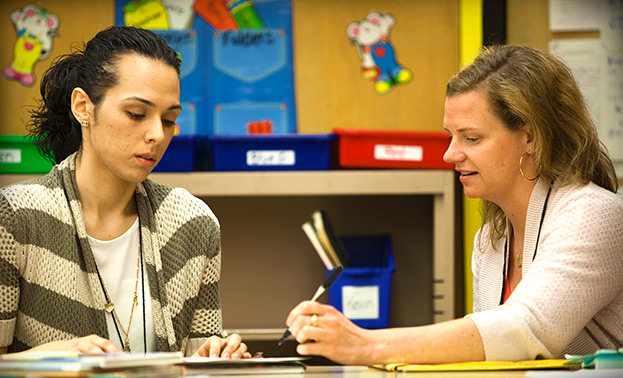


As an internal evaluator at an education non-profit, as well as the wife of a middle school teacher, I am inherently curious about how teachers respond to the professional development (PD) provided by their school district. A new report from the Gates Foundation provides evidence that supports what I often hear from the educators in my life — many teachers are unsatisfied with the quality of their in-school PD.
According to the report, the problem lies in the execution of activities – such as coaching, observation, and professional learning communities (PLCs) – not the practices themselves, which are theoretically grounded in research on teacher PD. The report also found a disconnect between teachers and school/district leaders – with leadership overwhelmingly expressing a desire to designate more time to these activities, while teachers reported that the current efforts in these areas were largely unsatisfactory. PLCs in particular were rated very poorly, with teachers reporting that PLC time often turns into “social hour” and, because of this, expressed lower satisfaction levels for PLC time than even the traditional “sit and get” workshop model for PD.
CLI has proven to be the exception to the norm when it comes to teacher PD. As avid proponents of research-based activities, we focus on providing meaningful PD to increase the quantity and quality of high-impact practices in the classroom. Ninety five percent of CLI teachers in our Investing in Innovation (i3) project reported that the professional development they received from CLI was consistent with their own goals for PD and built upon what they had learned in earlier PD. And across all of our partnering schools last year, over 96% of teachers reported that CLI had improved the level of collaboration between colleagues.
Purposeful and effective collaboration is essential to creating the professional learning environment necessary to enhance teacher effectiveness with the ultimate goal of improving student learning. According to Bolam et. al. (2005), effective PLCs are a sustainable way to promote capacity building in schools and are characterized by these eight key features:
The more developed the PLC, the more positive the association between pupil achievement and professional learning – two key measures of school effectiveness. PLCs are created, managed and sustained through four operational processes:
How can you turn research into practice and create a more effective PLC in your school? Tune in to our next blog for more information and helpful tips.
| Share this article on: | Donate |
